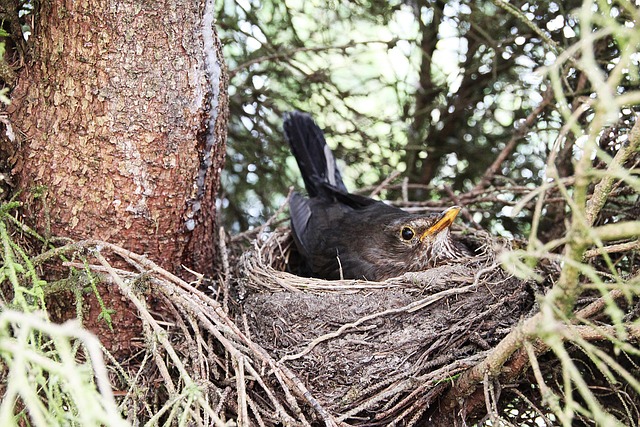Bird entry points pose risks to buildings and residents, causing structural damage and disease spread. To mitigate these issues humanely, identify and seal off entry points before nesting season, remove existing nests safely, and provide alternative nesting sites. A strategic, careful, and seasonal removal process by trained professionals using specialized equipment ensures minimal disturbance. Additionally, consider using mesh netting, bird spikes, or scarers to prevent access and maintain an aesthetically pleasing environment. Expert sealing of entry points benefits property owners and local avian populations while adhering to best practices for humane bird nest removal.
In many homes, birds can cause significant damage by accessing buildings through entry points. This article guides you through a comprehensive approach to addressing this issue, focusing on humane bird nest removal techniques and effective sealing methods. We’ll explore the critical impact of bird entry points, providing insights into best practices for experts aiming to prevent access humanely. Learn how to protect your property while ensuring the safety and well-being of these winged visitors.
Understanding Bird Entry Points and Their Impact
Understanding Bird Entry Points and Their Impact
Birds can find their way into homes through various entry points, from small gaps around pipes and wires to open windows and doors. These access points not only allow birds to enter but also pose significant risks to both the structure of buildings and the well-being of the residents. Birds can cause damage by nesting inside walls, leaving behind droppings that corrode surfaces, and even spreading diseases. Moreover, their nests can be unsightly and potentially hazardous, especially if they are located in strategic places like chimney tops or under eaves.
A humane bird nest removal strategy is essential to address these issues without causing harm to the birds. It involves identifying and sealing off entry points before birds have a chance to nest, ensuring that any existing nests are safely and humanely removed, and providing alternative nesting sites where possible. By implementing these measures, homeowners can protect their properties while also respecting the natural behavior of birds.
Humane Bird Nest Removal Techniques
When addressing bird access, it’s crucial to employ humane bird nest removal techniques that respect the well-being of these feathered inhabitants. This approach involves careful and strategic methods to evacuate nests without causing harm to the birds or disrupting their natural cycles. Expert professionals utilize specialized equipment and knowledge to safely extract nests from hard-to-reach entry points, ensuring minimal disturbance to both the birds and the structure itself.
The process begins with a thorough inspection to identify active nests and entry points. Once located, trained personnel employ various tools such as long-handled nets or suction devices designed for gentle capture. By carefully removing nests during specific seasons when eggs are not present, these techniques promote a balanced ecosystem while preventing birds from causing damage through relentless nesting attempts.
Effective Sealing Methods to Prevent Access
To effectively seal entry points and prevent bird access, several humane methods can be employed. One such method is using mesh or wire netting, which can be securely attached to openings, allowing for ventilation while blocking birds’ entry. This technique is particularly useful for larger gaps and is a popular choice among professionals for its durability and ease of installation.
Another humane approach is the strategic placement of bird spikes or scarers. These devices are designed to deter birds without causing them harm. Bird spikes, for instance, create an uneven surface that makes it physically uncomfortable for birds to land, while scarers use visual or auditory cues to scare them away. Combining these methods can significantly reduce bird access, ensuring a safe and humane environment while preserving the beauty of your space.
Benefits and Best Practices for Expert Implementation
The expert sealing of entry points is a crucial strategy for preventing bird access, offering numerous benefits for both property owners and local avian populations. By employing humane bird nest removal techniques, professionals can ensure that birds are safely relocated without causing harm or disrupting their natural behavior. This approach respects the needs of wildlife while maintaining control over unwanted visitors.
Best practices for expert implementation include identifying all potential entry points, utilizing a variety of sealing methods tailored to different materials and structures, and ensuring proper ventilation to prevent the buildup of harmful gases. Moreover, working with certified experts ensures compliance with local regulations and the use of environmentally friendly products. Regular inspections are also vital to address new or overlooked entry points, maintaining a long-term solution that benefits both humans and birds alike.
By understanding common entry points for birds and implementing effective sealing methods, property owners can humanely prevent bird access. Adopting best practices ensures not only the safety of these protected species but also protects buildings from potential damage. Remember, humane bird nest removal techniques are key to balancing conservation efforts with maintaining a safe living environment.
